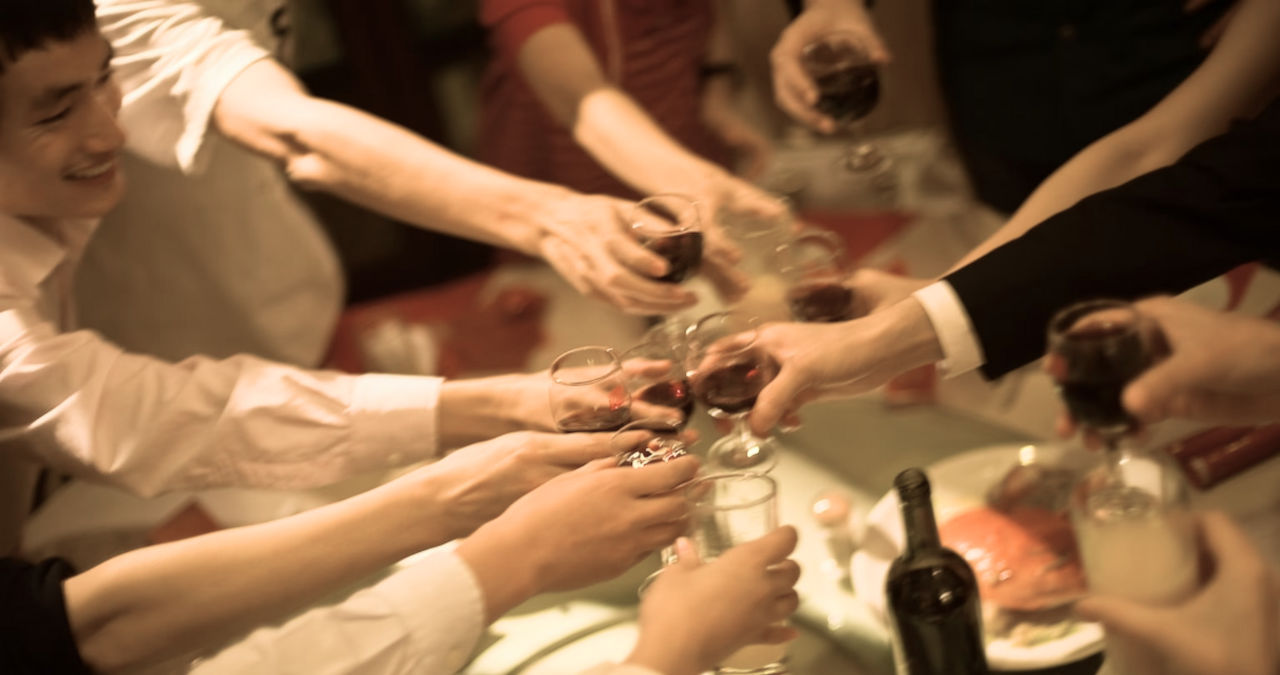Drinking Toast: A drinking toast is far more than just a clinking of glasses; it’s a ritual that carries history, emotion, and shared meaning. Whether it’s at a wedding, a milestone birthday, a casual dinner with friends, or even a professional gathering, the act of raising a glass and offering a few heartfelt words uniquely connects people. It’s a moment of unity, a collective pause where everyone focuses on a shared sentiment.
In its simplest form, a drinking toast is a verbal and symbolic gesture you raise your glass, say something meaningful (or amusing), and take a sip. Yet, behind that simple act lies centuries of tradition, cultural significance, and evolving styles. From solemn royal banquets to rowdy tavern celebrations, drinking toasts have adapted to fit every corner of human society. They carry a unique mix of personal expression and communal spirit, making them timeless in their appeal.
The Origins and History of the Drinking Toast
The roots of the drinking toast go back thousands of years. Ancient Greeks and Romans were known to make ritualistic toasts, often as offerings to the gods or as a mark of respect for absent friends. In Greece, it was common for the host to take the first sip of wine as a sign of trust, ensuring the drink wasn’t poisoned. Romans took it a step further by adding literal pieces of toasted bread into wine to mellow its acidity a likely origin of the term “toast.”
In medieval Europe, the act of touching cups during a drinking toast was said to symbolize unity and trust. Some legends suggest it allowed drops of wine to mix between goblets, signifying that no one was trying to poison another. While historians debate the truth of this, the symbolism of shared goodwill remains. Drinking toasts were often reserved for noble occasions, given with flowery language, and sometimes even enforced as part of elaborate dining rituals.
Over time, this tradition spread and transformed. The drinking toast became less about superstition and more about expressing well-wishes, honoring achievements, and strengthening bonds. In many cultures, it evolved into both a formal art and a casual habit, adaptable to nearly any occasion where people gather over drinks.
Cultural Variations in the Drinking Toast
Every culture puts its spin on the drinking toast, often reflecting its values, humor, and social etiquette. In Russia, the drinking toast is an art form it’s expected to be thoughtful and often poetic, sometimes going on for several minutes before anyone drinks. In Japan, a simple “Kanpai!” accompanied by raised glasses is the norm, and drinking doesn’t start until everyone participates.
In Germany, “Prost!” is delivered with direct eye contact a small but important detail that shows sincerity. In France, “À votre santé!” literally means “To your health,” and carries a sense of refined cheer. Across the Middle East, non-alcoholic toasts are common, often accompanied by tea or juice, and are centered on blessings and good fortune.
These variations reveal that, while the liquid in the glass might change, the underlying spirit of a drinking toast remains universal: acknowledging the moment, honoring those present, and wishing for good things ahead.

The Etiquette of a Proper Drinking Toast
A well-delivered drinking toast blends respect, sincerity, and timing. Good etiquette begins with understanding the role of the toast-giver. If you’re the host, it’s your responsibility to initiate the first toast, often to welcome guests or honor a specific person. Guests, in turn, may offer toasts in response or at appropriate moments.
When delivering a drinking toast, clarity is important you want everyone to hear the words and understand the sentiment. Keep it inclusive and considerate, avoiding inside jokes that alienate some listeners. Eye contact while raising the glass signals sincerity and connection. And, of course, it’s customary to take at least a small sip afterward; refusing to drink after a toast can be interpreted as rejecting the sentiment.
Timing is also key. A toast offered when people are mid-conversation can lose its impact, while one given during a natural pause draws focus and appreciation. In formal settings, the first drinking toast often happens after the main course is served, while in casual settings it can happen spontaneously.
Creative Ideas for Modern Drinking Toasts
In today’s gatherings, a drinking toast can be as traditional or as unconventional as you like. While classic phrases like “Here’s to us!” never go out of style, adding a personal touch makes the moment more memorable. For example, weaving in a humorous anecdote about the guest of honor or a shared experience gives the toast authenticity.
Poetic toasts are also making a comeback, where rhymes or clever wordplay add flair. For casual groups, short and snappy toasts work best, while intimate dinners may call for something more heartfelt. You could also draw inspiration from famous literary quotes, cultural proverbs, or even song lyrics just keep it appropriate to the tone of the event.
The rise of social media has even brought new formats, where people record and share their toasts, adding a modern twist to an ancient tradition. In some circles, creative props or coordinated gestures, like clinking glasses in a specific sequence, make the drinking toast a kind of performance art.
Drinking Toasts for Special Occasions
The magic of a drinking toast is that it can be tailored to fit any occasion. At weddings, toasts often blend humor, romance, and sentiment, celebrating the couple’s journey. Birthday toasts lean toward playful teasing mixed with genuine affection. Retirement parties might focus on gratitude and shared memories, while holiday gatherings often feature toasts to health, joy, and togetherness.
Even corporate events can benefit from a thoughtful toast. Recognizing achievements, welcoming new team members, or celebrating milestones over a glass alcoholic or not adds a human touch to professional life. The key is to match the tone to the occasion, ensuring the words resonate with the audience and the atmosphere.



